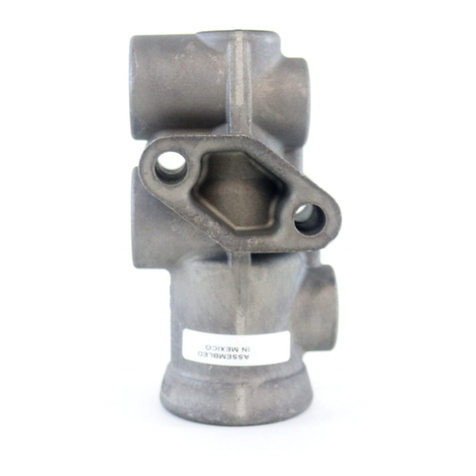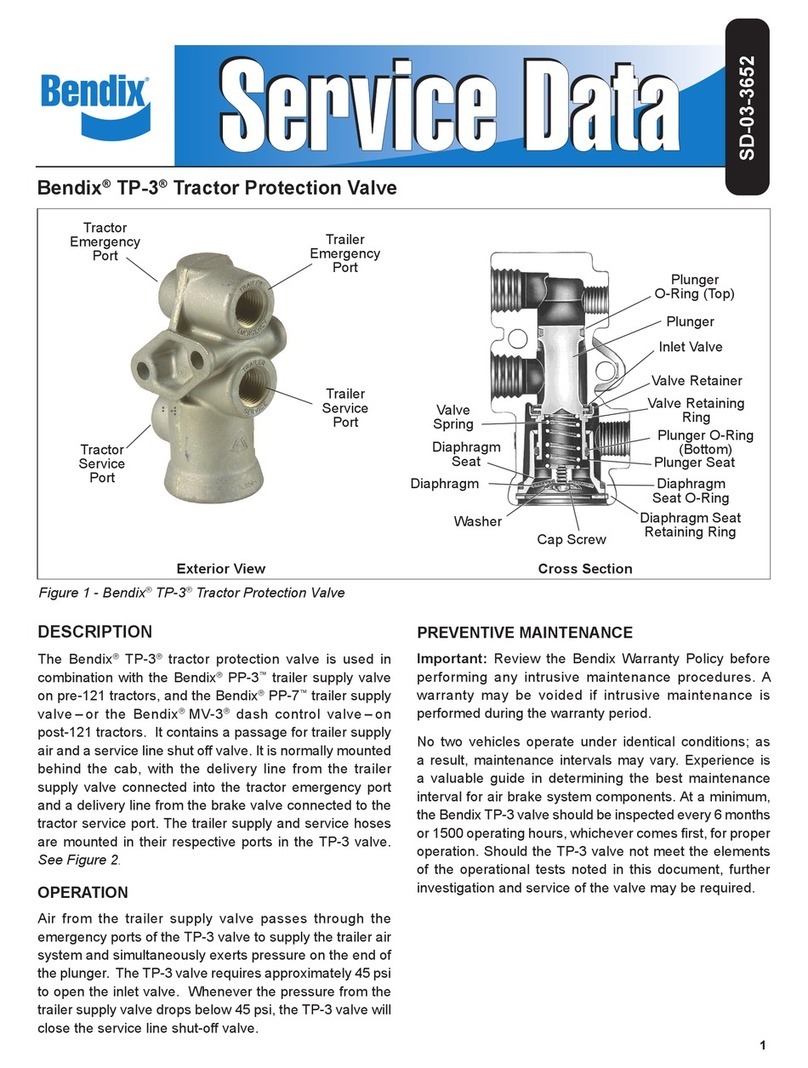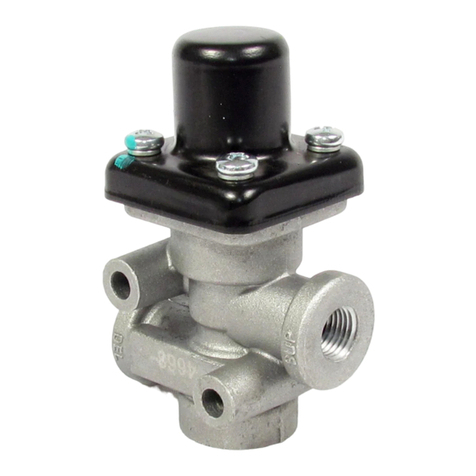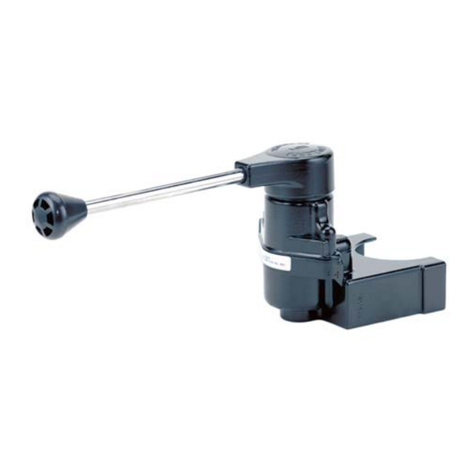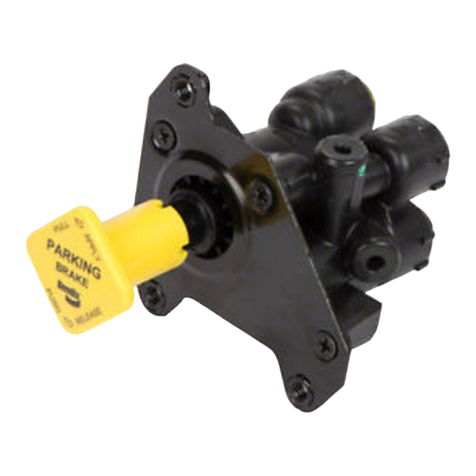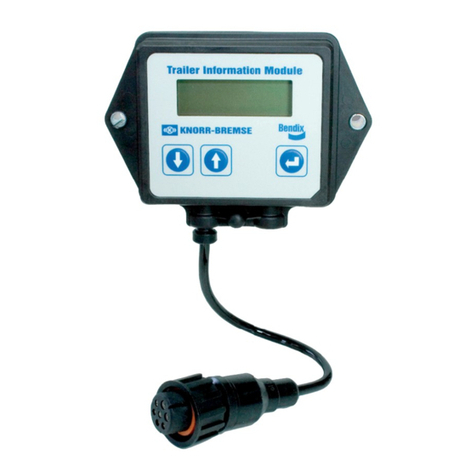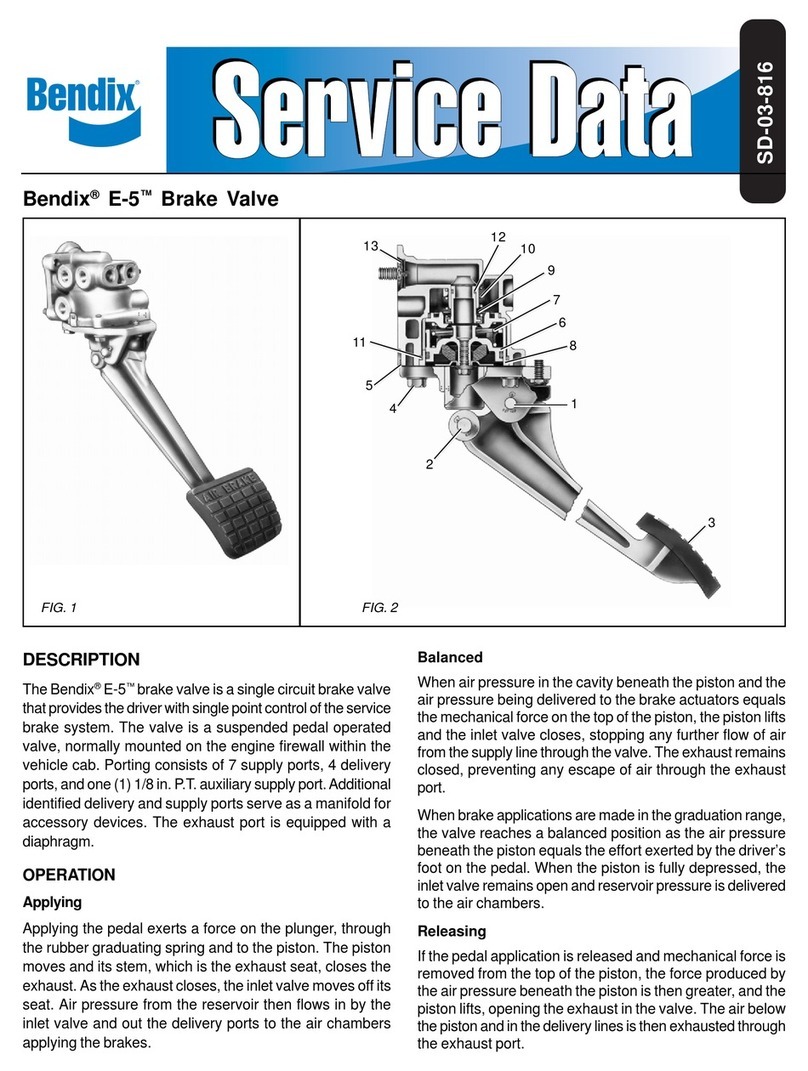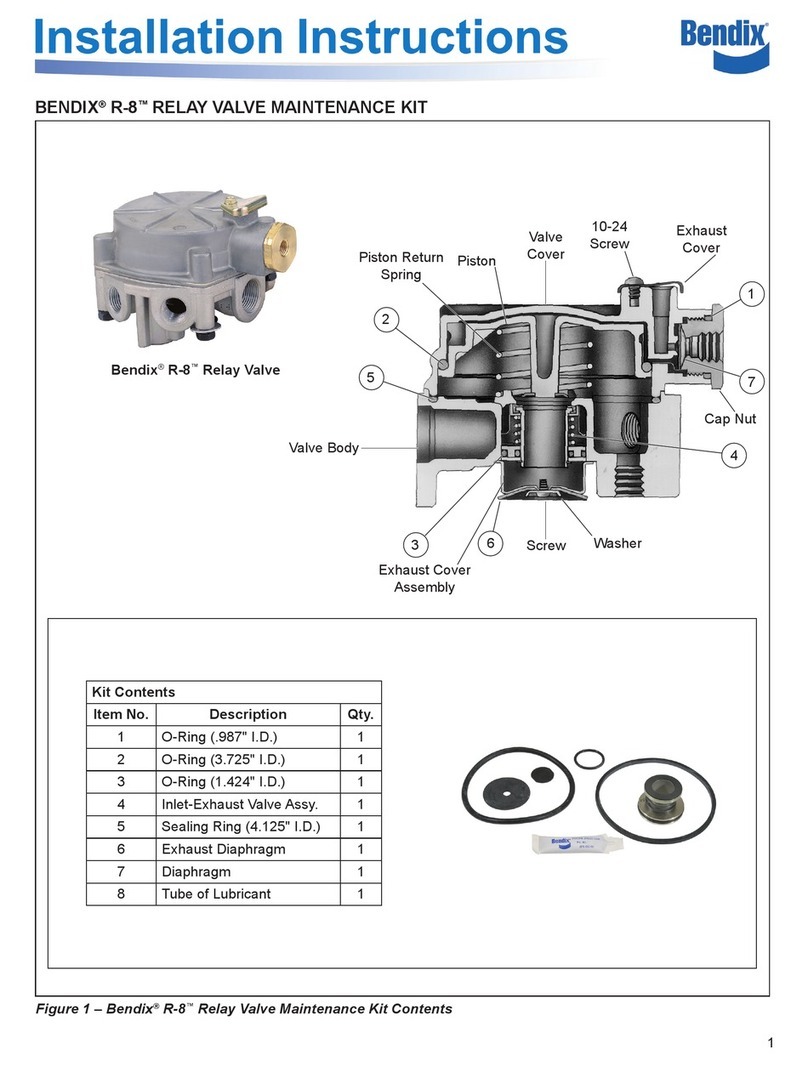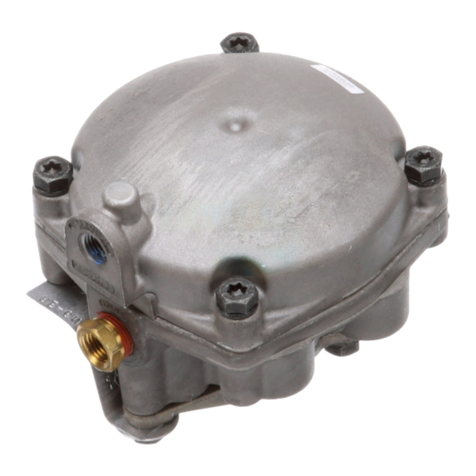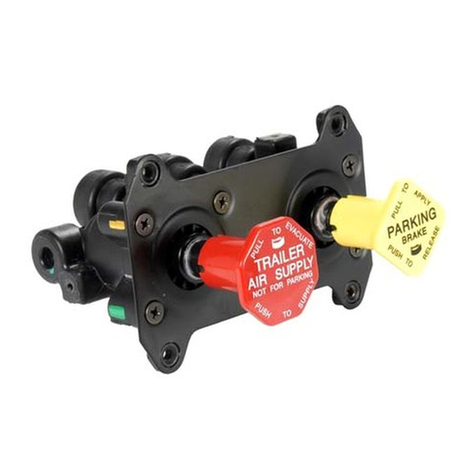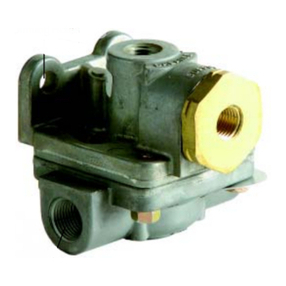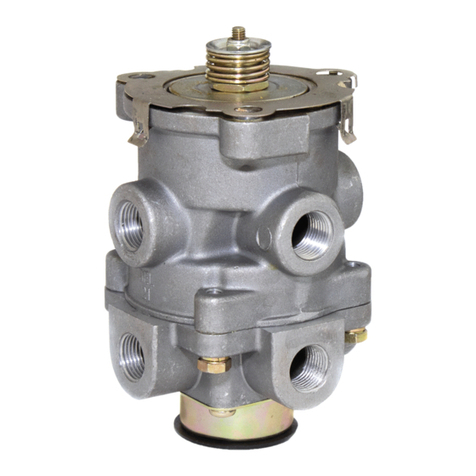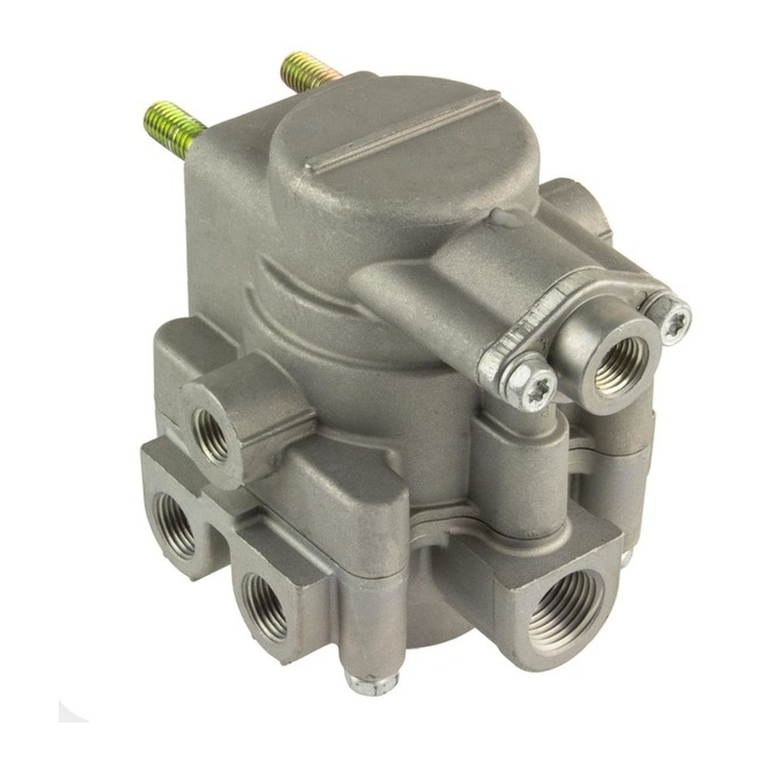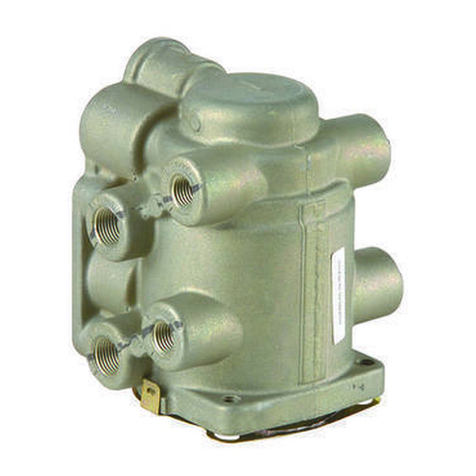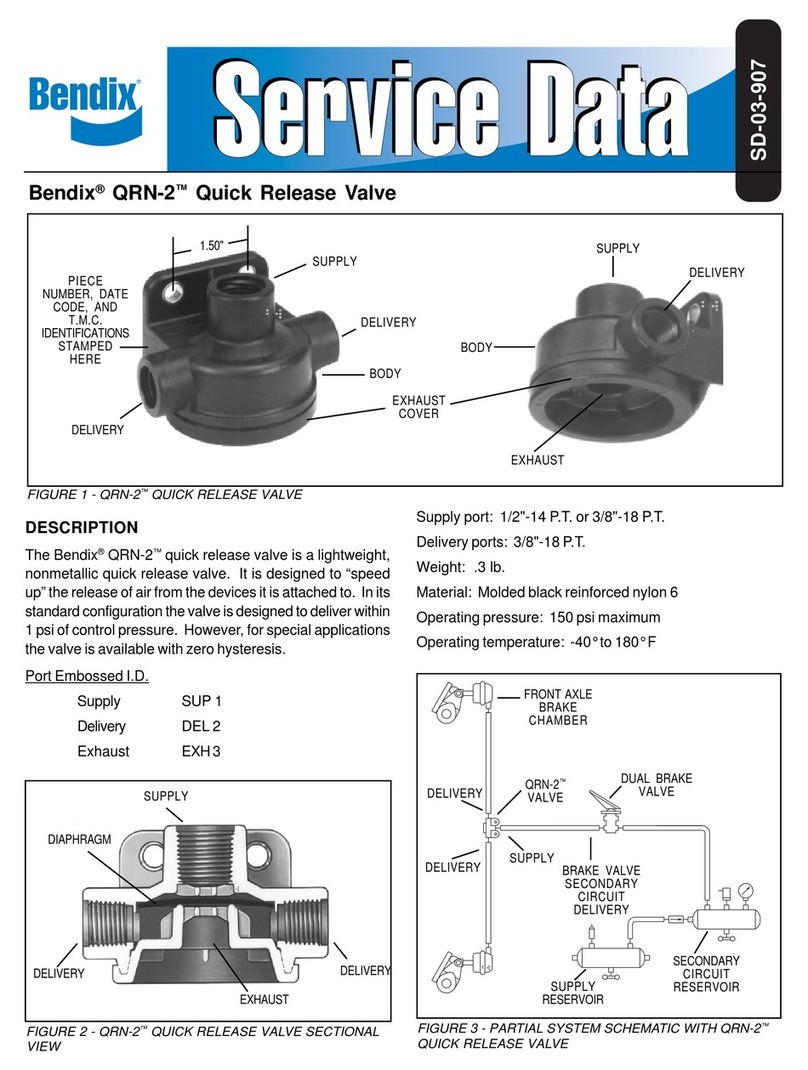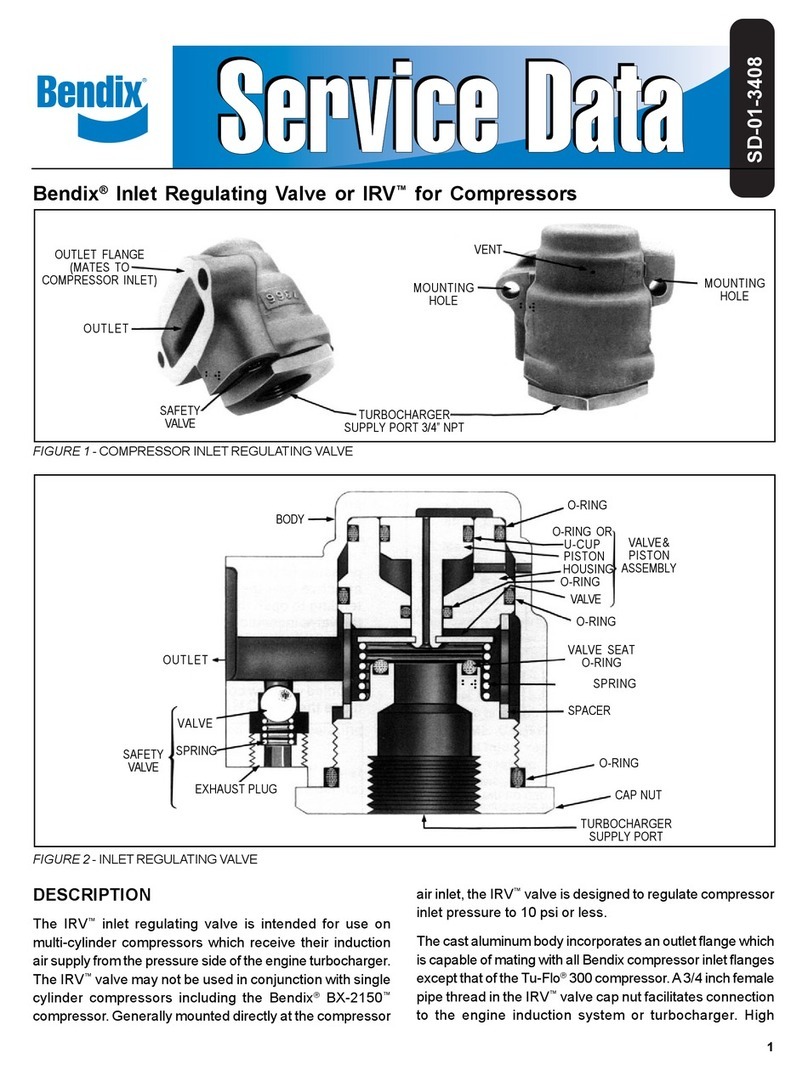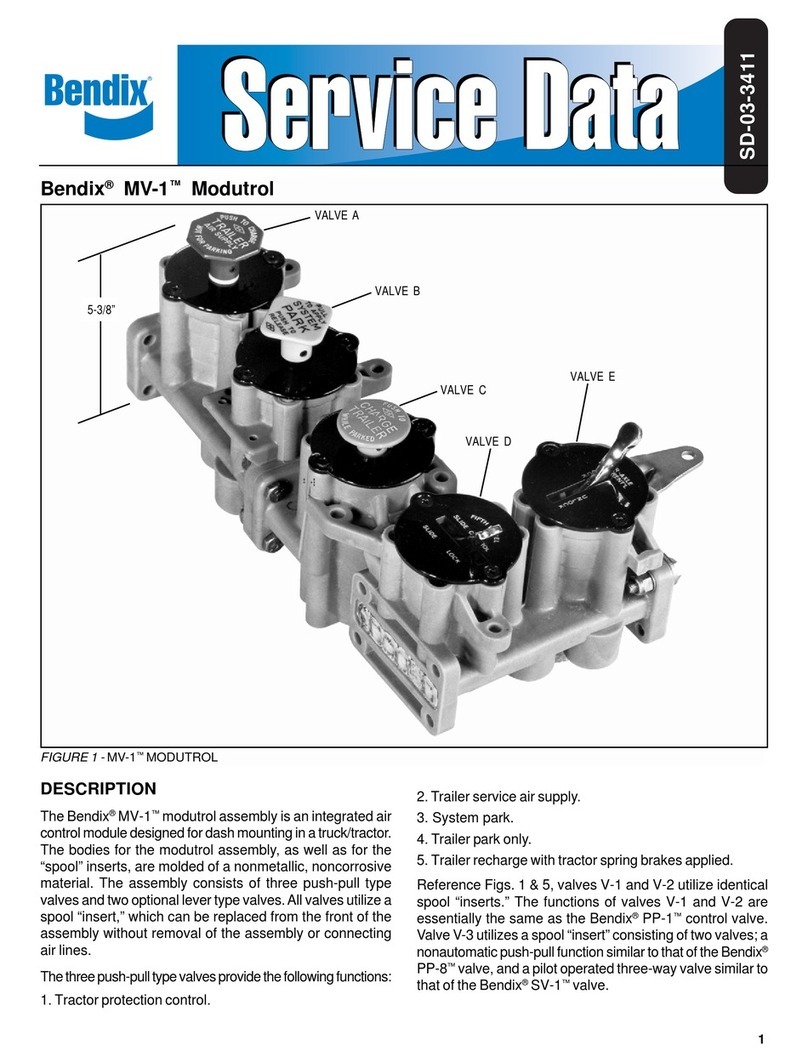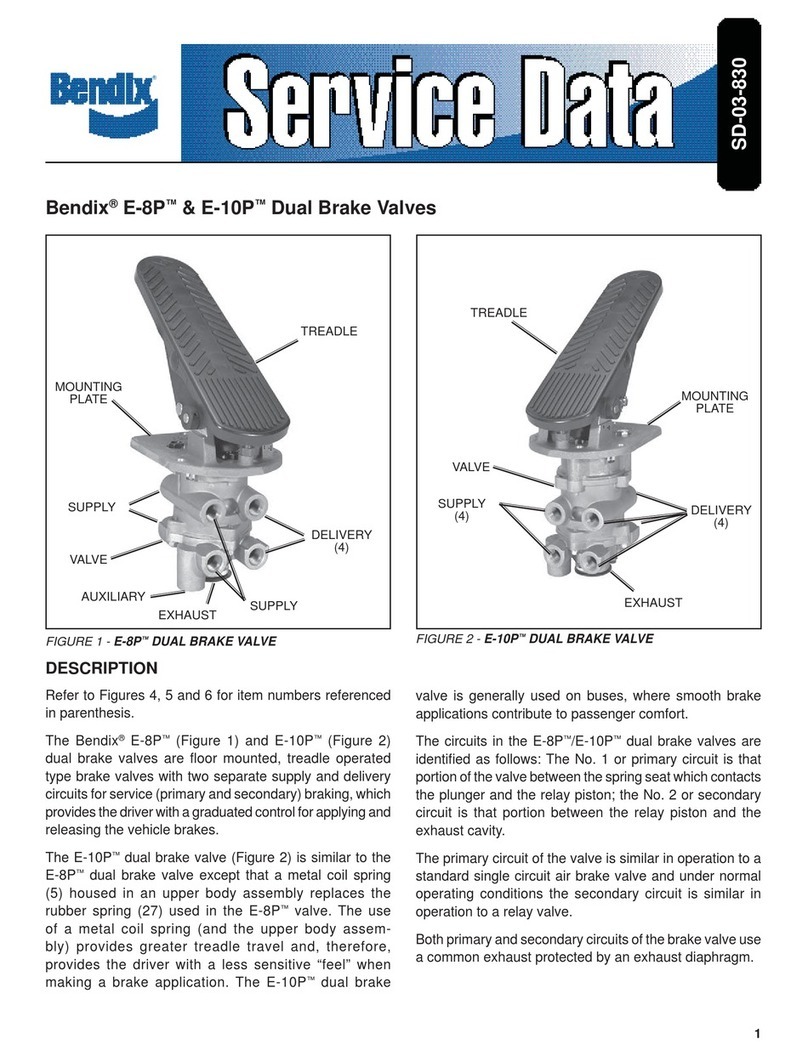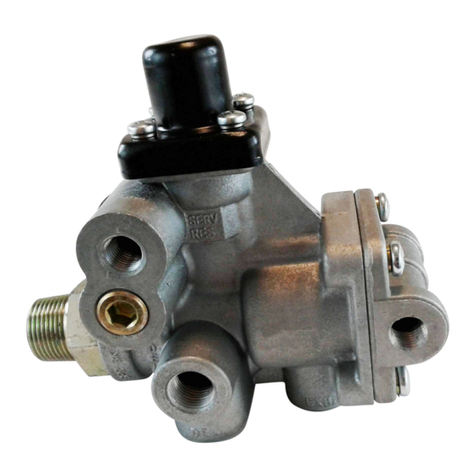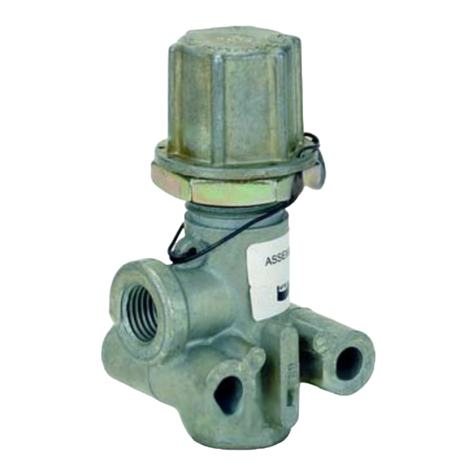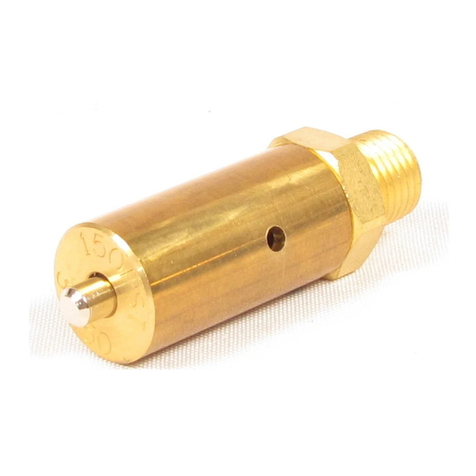
2
PREVENTIVE MAINTENANCE
Important: The TCS-9000™control brake valve is not
serviceable.
No two vehicles operate under identical conditions, as a
result, maintenance intervals may vary. Experience is a
valuableguideindeterminingthebestmaintenanceinterval
for air brake system components. At a minimum, the
TCS-9000™valve should be inspected every 6 months or
1500 operating hours, whichever comes first, for proper
operation.Shoulditnotmeettheelementsoftheoperational
tests noted in this document, further investigation and
replacementof thevalve may berequired.
REMOVING AND INSTALLING
Secure the vehicle with spring brakes or blocks. Drain the
reservoirwhichsuppliestheTCS-9000™valve.Removethe
fasteners which secure the mounting bracket to the panel.
Mark and disconnect the connecting air lines. Remove the
valve.
INSTALLING
A typical piping arrangement for the TCS-9000™valve is
shown in Figure 3. Check connecting air lines for integrity
and foreign material. Replace the lines if necessary.
Re-connecttheairlines. Replacefastenerssecuringbracket
topanel. Check operation of valvebycharging system and
performingtheservice check as described in this manual.
SERVICE CHECKS
OPERATING
When used as a trailer control valve connect an accurate
testgaugetothetrailerserviceline hoseandleave thetrailer
emergency or supply hose connected to the trailer or if a
traileris not available, connect the trailersupplyhose to an
unventeddummy coupling or toaplugged hose fitting. The
trailersupply valve should be inthenormal position.
Theexhaustvalvecloseswhentheoperatingleverismoved
from0° to15°and nopressureis delivered. With 15°to 40°
ofhandle travelthe valve deliversproportional intermediate
pressures up to 40psi.
In the fully applied position, up to 55° of handle travel, the
gaugeshouldregister fullreservoir pressure. Uponrelease,
thegauge should immediately register zero.
Thelocationoftheatmosphericendoftheexhaustlinefrom
the valve should be found, probably in the engine
compartment.
WiththeTCS-9000™valveinthereleaseposition,nopressure
shouldregister on the testgaugeand leakage at the endof
the exhaust line should not be greater than 100 SCCM
(1" bubble in 5 seconds).
With the valve fully applied, leakage at the exhaust line
should not be greater than 175 SCCM (1" bubble in 3
seconds).
Ifthe valve doesnot function asdescribed, or ifthe leakage
is excessive, it is recommended that it be returned to the
nearest Bendix authorized distributor for a service
replacement.
WARNING! PLEASE READ AND FOLLOW
THESE INSTRUCTIONS TO AVOID
PERSONAL INJURYOR DEATH:
When working on or around a vehicle, the following
general precautions should be observed at all times.
1. Park the vehicle on a level surface, apply the
parking brakes, and always block the wheels.
Always wear safety glasses.
2. Stop the engine and remove ignition key when
working under or around the vehicle. When
working in the engine compartment, the engine
should be shut off and the ignition key should be
removed. Where circumstances require that the
engine be in operation, EXTREME CAUTION should
be used to prevent personal injury resulting from
contact with moving, rotating, leaking, heated or
electrically charged components.
3. Do not attempt to install, remove, disassemble or
assemble a component until you have read and
thoroughly understand the recommended
procedures. Use only the proper tools and observe
all precautions pertaining to use of those tools.
4. If the work is being performed on the vehicle’s air
brake system, or any auxiliary pressurized air
systems,make certain to drain the air pressure from
all reservoirs before beginning ANY work on the
vehicle. If the vehicle is equipped with an AD-IS®
air dryer system or a dryer reservoir module, be
sure to drain the purge reservoir.
5. Following the vehicle manufacturer’s
recommended procedures, deactivate the electrical
systemin a manner that safely removes all electrical
power from the vehicle.
6. Never exceed manufacturer’s recommended
pressures.
7. Never connect or disconnect a hose or line
containing pressure; it may whip. Never remove a
componentor plugunless you are certain all system
pressure has been depleted.
